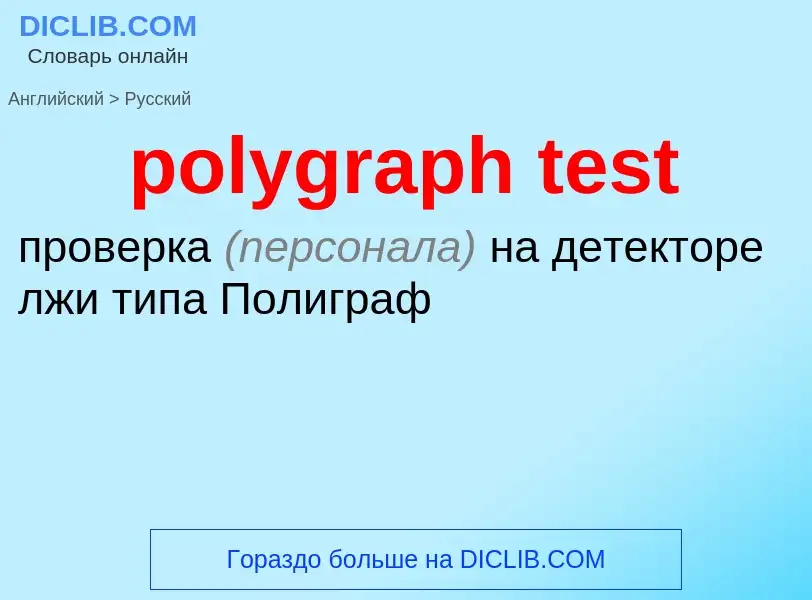Перевод и анализ слов искусственным интеллектом ChatGPT
На этой странице Вы можете получить подробный анализ слова или словосочетания, произведенный с помощью лучшей на сегодняшний день технологии искусственного интеллекта:
- как употребляется слово
- частота употребления
- используется оно чаще в устной или письменной речи
- варианты перевода слова
- примеры употребления (несколько фраз с переводом)
- этимология
polygraph test - перевод на русский
['laiditektə]
общая лексика
полиграф
детектор лжи (прибор для проверки правильности показаний допрашиваемого)
индикатор лжи
['pɔligrɑ:f]
общая лексика
проверка психофизиологическая
техника
полиграф
существительное
общая лексика
автор многих книг
плодовитый писатель
множительный аппарат
копия
экземпляр
детектор лжи
специальный термин
полиграф
многоканальный осциллограф (аппарат, регистрирующий реакции организма)
существительное
общая лексика
'детектор лжи' (прибор для проверки правильности показаний)
[pə'ligrəfi]
существительное
общая лексика
плодовитость писателя
метод репродукции картин
история
система тайного письма
Определение
Википедия

A polygraph, often incorrectly referred to as a lie detector test, is a device or procedure that measures and records several physiological indicators such as blood pressure, pulse, respiration, and skin conductivity while a person is asked and answers a series of questions. The belief underpinning the use of the polygraph is that deceptive answers will produce physiological responses that can be differentiated from those associated with non-deceptive answers; however, there are no specific physiological reactions associated with lying, making it difficult to identify factors that separate those who are lying from those who are telling the truth.
In some countries, polygraphs are used as an interrogation tool with criminal suspects or candidates for sensitive public or private sector employment. US law enforcement and federal government agencies such as the FBI, DEA, CIA, NSA, and many police departments such as the LAPD and the Virginia State Police use polygraph examinations to interrogate suspects and screen new employees. Within the US federal government, a polygraph examination is also referred to as a psychophysiological detection of deception (PDD) examination. The average cost to administer the test in the United States is more than $700 and is part of a $2 billion industry.
Assessments of polygraphy by scientific and government bodies generally suggest that polygraphs are highly inaccurate, may easily be defeated by countermeasures, and are an imperfect or invalid means of assessing truthfulness. A comprehensive 2003 review by the National Academy of Sciences of existing research concluded that there was "little basis for the expectation that a polygraph test could have extremely high accuracy." The American Psychological Association states that "most psychologists agree that there is little evidence that polygraph tests can accurately detect lies."
The control question test, also known as the probable lie test, was developed to overcome or mitigate the problems with the relevant-irrelevant testing method. Although the relevant questions in the probable lie test are used to obtain a reaction from people who are lying, the physiological reactions that distinguish lies may also occur in innocent individuals who fear false detection or feel passionately that they did not commit a crime. Therefore, although a physiological reaction may be occurring, the reasoning behind the response may be different. Further examination of the probable lie test has indicated that it is biased against innocent subjects. Those who are unable to think of a lie related to the relevant question will automatically fail the test.



